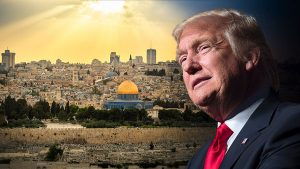Bihaloischo 2018: Tifilin, Jesus, Trump & Trumpets
by devadmin | May 31, 2018 9:55 pm
Tifilin, Jesus, Trump, & Trumpets
The entire country is busy with Trump. Some love him, others, not so much. That being stated, this week, we will begin our review of parshas Bihaloischo not with a discussion on Trump. Instead we will learn what the parsha tells us about “trumpets,” two of them.” Ober, before we begin, let’s discuss the relationship between Tifilin and Jesus Christ -li’havdil elef alfay havdolois- and a myseh sh’hoyo (a true story). Tifilin and who? Is there mamish a connection?
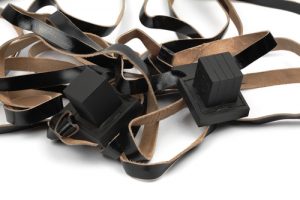 Shoin, this past week, the Oisvorfer found himself at morning minyan seated next to a gentlemen who happened to be the 10th man, the man often referred to as “the tzenter” because it is he, who actually makes the minyan. A minyan is a Jewish quorum of ten which allows for certain prayers to be recited. So happens that this gentleman comes to shul kimat daily, and makes sure not to leave when there are but ten including him. This gentleman who seemingly cannot read Hebrew, does hold an Art Scroll siddur in his hands while davening (during prayers). Shoin. The Oisvorfer was by chance seated to the gentleman’s left and thought he overheard him -more than once during his somewhat silent prayers- invoke the name of Jesus Christ. Who? Certainly this could not be, could it? The Oisvorfer had likely taken in too much sun and was delirious. Ober, was the gentleman indeed invoking that name during his prayers, all while donning a tails (prayer shawl) and with his tifilin properly wrapped? The Oisvorfer decided to come back another morning and listen again. Again, he heard the same thing. At least three times, the Oisvorfer thought he heard the gentleman invoking the name of Jesus. Oy vey! How could this Yid be in shul, helping to make the minyan and yet davening -while holding his siddur- to Jesus? Still the Oisvorfer continued to believe that maybe his mind was playing tricks with him. Efsher he needed to have his ears checked? Efsher the gentleman was really saying “he-says thrice,” or something else that epes sounded like Jesus. Shoin, this past Monday, on Memorial Day mamish, again the Oisvorfer was at the same minyan and the same gentleman popped in. This time the name Jesus was invoked at least five times. A few hours later the Oisvorfer ran into another gentleman who was at the minyan. He happened to be seated one row behind. The Oisvorfer asked if a person who invokes Jesus during davening, can be counted for a minyan. The man was shocked and stated: OMG! “You heard that too? I thought I heard that, but I was sure I misheard.”
Shoin, this past week, the Oisvorfer found himself at morning minyan seated next to a gentlemen who happened to be the 10th man, the man often referred to as “the tzenter” because it is he, who actually makes the minyan. A minyan is a Jewish quorum of ten which allows for certain prayers to be recited. So happens that this gentleman comes to shul kimat daily, and makes sure not to leave when there are but ten including him. This gentleman who seemingly cannot read Hebrew, does hold an Art Scroll siddur in his hands while davening (during prayers). Shoin. The Oisvorfer was by chance seated to the gentleman’s left and thought he overheard him -more than once during his somewhat silent prayers- invoke the name of Jesus Christ. Who? Certainly this could not be, could it? The Oisvorfer had likely taken in too much sun and was delirious. Ober, was the gentleman indeed invoking that name during his prayers, all while donning a tails (prayer shawl) and with his tifilin properly wrapped? The Oisvorfer decided to come back another morning and listen again. Again, he heard the same thing. At least three times, the Oisvorfer thought he heard the gentleman invoking the name of Jesus. Oy vey! How could this Yid be in shul, helping to make the minyan and yet davening -while holding his siddur- to Jesus? Still the Oisvorfer continued to believe that maybe his mind was playing tricks with him. Efsher he needed to have his ears checked? Efsher the gentleman was really saying “he-says thrice,” or something else that epes sounded like Jesus. Shoin, this past Monday, on Memorial Day mamish, again the Oisvorfer was at the same minyan and the same gentleman popped in. This time the name Jesus was invoked at least five times. A few hours later the Oisvorfer ran into another gentleman who was at the minyan. He happened to be seated one row behind. The Oisvorfer asked if a person who invokes Jesus during davening, can be counted for a minyan. The man was shocked and stated: OMG! “You heard that too? I thought I heard that, but I was sure I misheard.”
Shoin, as to whether or not this person can be counted for the minyan is beyond the scope of this week’s parsha review, ober if anyone knows the halachic ruling, feel free to email your thoughts and conclusions to www.oisvorfer.com. One thing is zicher: The Art Scroll Siddur does not contain this name. Veyter.
Let’s talk about Trump and trumpets and let’s then begin by reading a few pisukim that mistama never caught your attention? Why not? Ershtens, you weren’t paying attention. Instead, you were schmoozing with your chaver on either side of you, mistama discussing some juicy loshoin horo, during laining. More on that below. Alternatively, this week’s parsha is so action packed with so many very interesting and exciting storylines -a proper review would take 20 or more pages- it’s easy to miss (though ten pisukim are dedicated to them), the discussion on trumpets. Says the heylige Toirah (Bamidbar 10:1-10), azoy:
(1) Hashem spoke to Moshe, saying:
(2) Make for yourself two trumpets of silver; of a solid piece you shall make them, that they shall be for you for calling the assembly and for the journeying of the camps.
(3) And when they sound them, the entire assembly will gather at the entrance to the Tent of Meeting.
(4) And if they sound only one [of them], then [only] the princes the heads of the thousands of Israel will gather to you.
(5) When you sound the alarm, the camps that lie on the eastern side will move on.
(6) And when you sound the alarm a second time, the camps on the southern side will follow; they will sound an alarm for their journeys.
(7) For gathering the congregation you shall sound a blast, but not an alarm.
(8) And the children of Aharon, the kohanim, shall sound the trumpets, and they will be for you for an eternal statute, for all your generations.
(9) And if war comes upon you in your land by an enemy that oppresses you, then you shall sound an alarm with the trumpets and be remembered before the Lord your Hashem, and be saved from your enemies.
(10) And on your festive days, and your days of solemn assembly, and the beginnings of your months, you shall sound the trumpets over your burnt offerings and over the sacrifices of your peace offerings, that they may be a memorial for you before your Hashem; I am the Lord your Hashem.
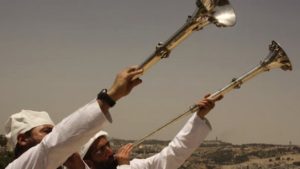 Let’s review: Who made them? Moishe alone. Those were the RBSO’s specific instructions. For what purpose? To summon the Sanhedrin, the people, to alert the nation when to move and stop, and to announce when the korbonis (sacrifices) would be offered on Rosh Choidesh and on Yom tov. We will also learn that the trumpets needed to be sounded at times of affliction. Why were trumpets needed to move the nation when we previously learned that the nation moved at Hashem’s command and when the clouds of glory began to move? Says the Sifri, azoy: even though the Yiddin did in fact move at the RBSO’s instructions, still He instructed that trumpets be employed and used. Shoin. Who blew them? Though posik 2 indicates that efsher Moishe blew them, in the end, seemingly all agree, that Moishe only made them. The son’s of Aharoin, meaning the koihanim did the blowing. Could every kohain blow? Of course not all agree. Says Rebbe Tarfon: even kohanim with ‘mums,’ those with some form of physical affliction or deformity, could also blow. Ober said rebbe Akiva: no! Only kohanim in perfect physical form could blow. Shoin: when it comes to blowing, avada not everyone agrees, if you chap.
Let’s review: Who made them? Moishe alone. Those were the RBSO’s specific instructions. For what purpose? To summon the Sanhedrin, the people, to alert the nation when to move and stop, and to announce when the korbonis (sacrifices) would be offered on Rosh Choidesh and on Yom tov. We will also learn that the trumpets needed to be sounded at times of affliction. Why were trumpets needed to move the nation when we previously learned that the nation moved at Hashem’s command and when the clouds of glory began to move? Says the Sifri, azoy: even though the Yiddin did in fact move at the RBSO’s instructions, still He instructed that trumpets be employed and used. Shoin. Who blew them? Though posik 2 indicates that efsher Moishe blew them, in the end, seemingly all agree, that Moishe only made them. The son’s of Aharoin, meaning the koihanim did the blowing. Could every kohain blow? Of course not all agree. Says Rebbe Tarfon: even kohanim with ‘mums,’ those with some form of physical affliction or deformity, could also blow. Ober said rebbe Akiva: no! Only kohanim in perfect physical form could blow. Shoin: when it comes to blowing, avada not everyone agrees, if you chap.
Ober what happened to these trumpets? How long were they in use? Says the Medrish (Tanchuma 15), azoy: the two trumpets fashioned by Moishe and used in his generation, disappeared. Who took them? The RBSO! The medrish tells us that the RBSO hid them, never to be seen again. When? Shortly before Moishe died. Ober, did we not learn that Yihoishua (Joshua), Moishe’s successor and the person who led the Yiddin into the Promised Land also blew a noisemaker to move the people? Indeed we did. Ober, says the Novee (Prophet) Yishoishua (6:4, 8, and a few others) that in preparation of entry into the Land, they should get shofars ready to be blown. Note that in this case, shofros (more than one shofar) were ordered. How many shorfros were blown during entry? Seven! Why seven?
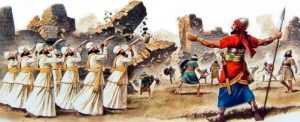 Nu, if you pick up the novee Yihoishua and read perek (chapter) 6, there you will find the very amazing details of how the sound of seven shofros being blown by seven kohanim, resulted in the walls of Yirichoi (Jericho) coming down.
Nu, if you pick up the novee Yihoishua and read perek (chapter) 6, there you will find the very amazing details of how the sound of seven shofros being blown by seven kohanim, resulted in the walls of Yirichoi (Jericho) coming down.
Were trumpets ever used again? Yes. New ones were fashioned and used by the kohanim in later generations. When were trumpets used as opposed to the sound of the shofar (ram’s horn)? The heylige Toirah specifically delineates when each is to be used. Why? Ver veyst!
Bottom line: seemingly Trumpets are noisemakers. They stir the people into action. Unzer President Trump is taka also a noisemaker. He too stirs certain people, and is seemingly a man of action. He did move the embassy to Yisrusholayim, did he not? Indeed he did, and deserves a yashar koiach (a thank you). Veyter.
One last thought on blowing and trumpets. Says Posik 9 above, that trumpets were also to be blown when and if the Yiddin went to war against an enemy, or if an enemy was on the attack (“if you go to war with an enemy that oppresses you…”). Says the Likutei Sichos, azoy: this war alludes to war against one’s own evil inclination, his formidable yetzer horo. He, mighty as he is, is always waging war. He’s a blowhard and stirs people into action, if you chap, the actions the RBSO abhors, including loshoin horo. What to do? Blow the trumpets! Metaphorically, this blowing means the breaking of one’s haughty spirits. Shoin!
Trumpets are mentioned in several places in the Novee, including Malochim 2 (Kings), in Nechemia and Ezra. In Hoishaya 5:8 (Hosea), we find this: “sound a shofar in Gibeah, a trumpet in Ramah.” Were they at times interchangeable? Well, blow me down!
Speaking of loshoin horo, let’s cover one more severe case.
The heylige Toirah, also in this week’s parsha, will tell us that Miriam and Aharoin were involved in a loshoin horo incident that resulted in Miriam being kicked out of the camp and also coming down with a case of leprosy. Is that true? Is that what the Toirah tells us? Were Miriam and Aharoin taka bad mouthing Moishe? Well, not exactly and certainly it doesn’t tell us what was said ober leave it up to Rashi and myriad others to tell us what went down or in this case, what didn’t, if you chap. Ober what did happen? Nu, lommer lernin.
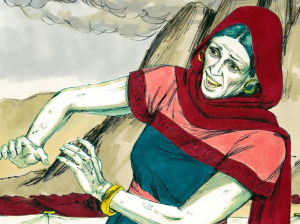 And taka every year this time, a few rabbis will remind us about the perils of loshoin horo and how Miriam was stricken with leprosy for her participation in the loshoin horo caper. Ober what about Aharoin? Does the heylige Toirah not tell us that Miriam and Aharoin were talking? It sure does. Did Aharoin get a free pass? Maybe so; soon we’ll address that possibility.
And taka every year this time, a few rabbis will remind us about the perils of loshoin horo and how Miriam was stricken with leprosy for her participation in the loshoin horo caper. Ober what about Aharoin? Does the heylige Toirah not tell us that Miriam and Aharoin were talking? It sure does. Did Aharoin get a free pass? Maybe so; soon we’ll address that possibility.
Let’s revisit with Rashi who had this to tell us: Tzipoirah, Moishe’s wife, upon hearing of the introduction of two new prophets into the Jewish community, exclaimed: “Woe is to their wives, who will have to be separated from their husbands, now that they are prophets, in the same manner that Moishe separated from me.” Was Moishe separated from Tzipoirah? Ok- detail needed here. This is what we know: Miriam overheard her sister-in-law Tzipoirah bemoaning the fate of women who are married to prophets. Miriam took Moishe to task reminding him that aside from the mitzvah of peru urvu (being fruitful and multiplying) the Toirah is adamant about a man’s obligation to a woman’s conjugal needs for intimacy. Seemingly, back then Jewish women may taka have had such needs; today, fugetaboutit! Miriam and Aharoin told Moishe that he cannot divorce himself from his wife forever, rather only when he was speaking with the RBSO. And they said, has the RBSO indeed spoken only with Moishe? Hasn’t he spoken also with us?” Meaning, both of us also receive prophecy and yet we do not leave our spouses celibate.
Says the heylige Toirah (Bamidbar 12:1) azoy: “…because of the Kushite woman, whom he had married, for he had married a Kushite woman.” Bikitzur (in short), Miriam and Aharoin said something disparaging about their brother Moishe that concerned his Kushite wife. Ok- what’s going on here? Were they referring to Tzipoirah as we read above or to Moishe’s Kushite wife? Was Moishe leaving them both wanting? What is a Kushite woman, why is Moishe’s wife being called the Kushite woman? Wasn’t she, his wife, a Midianite? Seemingly she is called a Kushite because she was black! Is that clear enough? Moishe was married to a tinkele wife? Not that there is anything wrong with that ober is that emes?
Says the Rashbam: the Kushite woman was a black woman descended from Cham, the minuvil son of Noiach who was epes involved in a rape, castration or both, ver veyst. Remember him? Such nachas! And how was it that Moishe, leader of the Yiddin, handpicked by the RBSO, ended up with a Kushite wife? The medrish will fill in the blanks or make up a story, or both and tell us azoy: When Moishe reigned over the land of Kush for forty years; he married the queen of Kush but never consummated the marriage. He was the king of Kush? He went 40 years without chapping? Was this the forerunner of the typical orthodox husband/wife relationship? Vey-iz-mir! Is any of this found in the heylige Toirah? It’s not! Says the medrish (Chronicles) azoy: Moishe pushed her away “and wedged a sword between her and himself”. This expression implies that although Moishe entered into a sacred matrimonial union with the Kushite woman he did not engage in a physical relationship with her. One medrish tells us that Moishe didn’t consummate because she refused to convert. Nu, if this medrish is to be taken literally and of course aren’t they all, es-farshteytzich (clearly understood) that Moishe wasn’t going to take chances of being Bobittized if you chap. Ober taka how can it be that Moishe, then the king of a land called Kush, would be married for 40 years without consummating the marriage? Did she efsher have the longest headache in recorded history? Moreover, we know that Moishe was previously married to Tzipoirah, daughter of Yisroi whom he met when he arrived in Midian? Who takes a second wife or replaces the first for less chapping than he had in the first marriage? Doesn’t one typically choose a second wife because the first wife withheld her favors for extended period of times? And what is the significance of her being black? What do Miriam and Aharoin have to do with Moishe and his wives? Nu, so many questions; let’s see if we can make some sense of the gantze myseh.
Seemingly, Miriam and Aharoin criticized Moishe for marrying this Canaanite woman. In reality, many will suggest that what they were gossiping about was the fact that Moishe was withholding the goodies from his wife, the Kushite. Seemingly, the Kushite wife who was apparently black, complained to Miriam that Moishe was an absentee husband, if you chap. Miriam then repeated this loshoin horo to Aharoin and shoin, soon enough, the RBSO heard the rumor as well. As an aside, the Eben Ezra agrees that the Kushite woman is black. He doesn’t, however, buy into the entire queen story and the 40 year unconsummated marriage p’shat. Which second wife and which black woman would put up with 40 years of celibacy? How about 40 minutes? Instead he suggests that Moishe married Tzipoirah as we learned way back in Parshas Shemois and that she- Tzipoirah was also black. Says the Eben Ezra: though Tzipoirah was from Midian rather than Kush, her skin was black from the abundant sunlight there. Shoin! So Moishe liked and married a black woman, is that so giferlich? Was this the first time that Miriam and Aharoin laid eyes on her? Why was this considered loshoin horo and what happened next?
Seemingly not but what was bothering his siblings was not that she was black but that they had suspected him (Moishe) of not servicing her properly because she was homely. Taka a person should know that if you’re going to marry black, she should taka be a beauty; how else will you be able to explain yourself?
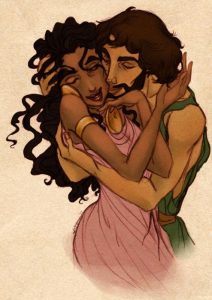 Ober (but) Rashi says farkert (the opposite) and associates the Kushite woman with Tzipoirah on opposite grounds. Scripture calls her black to imply that all agreed as to her beauty, that she was taka a black beauty. Rashi says it’s but a metaphor and just as all agree as to the blackness of an Ethiopian, all agree that Tzipoirah was a beauty. In other words, though she was, according to Rashi, black like the night, she was mamish a beauty. Ok- veyter (let’s move on).
Ober (but) Rashi says farkert (the opposite) and associates the Kushite woman with Tzipoirah on opposite grounds. Scripture calls her black to imply that all agreed as to her beauty, that she was taka a black beauty. Rashi says it’s but a metaphor and just as all agree as to the blackness of an Ethiopian, all agree that Tzipoirah was a beauty. In other words, though she was, according to Rashi, black like the night, she was mamish a beauty. Ok- veyter (let’s move on).
A medrish in fact suggests that the gematria (numerical value) of ‘kushite’ is the same as that of ‘yifas mareh’ (beautiful of appearance). Another reason Rashi gives is that on account of her beauty, she was called “The Ethiopian,” meaning that just as a man calls his handsome son ‘black’ in order to thwart any potential harmful effect through an ayin horo (evil eye), so too, Tzipoirah is referred to as a Kushi. In any event, regardless of whether the Kushite was a second wife or a girlfriend or if Tzipoira was referred to as ‘The Kushite Woman’, the question still remains as to what fault Miriam and Aharoin found in the relationship between Moishe and his wife and why the RBSO got so angry at their idle gossip.
Anyway, the gantze mayseh (story) seems somewhat confusing and therefore we need to learn the text word by word to try to chap what went down here. And taka since shabbis isn’t over until after 9:00PM, it wouldn’t be so giferlich were you to pick up the Chumish and learn this amazing myseh. In fact so confusing is this story that it’s one of the instances where the heylige Toirah sort of left a few blanks for us to fill in. But taka why does the Toirah discuss this issue so cryptically? Without Toirah she-ba’al peh (Oral tradition) and trying to chap what went down or didn’t, if you chap, between the lines, there is absolutely no way we can make heads or tails of this story from a simple reading of the text. Why couldn’t the Toirah explicitly say what their complaint about Moishe was and how the RBSO defended him? Nowhere in the text does it mention anything about Moishe’s’ wife being separated from him. And if that is their beef, why does the Toirah leave out the main point of the story?
Ober Raboyseyee, efsher we can kler (posit) that stories like this one concerning Miriam, Aharoin, loshoin horo and a black or beautiful girl, are told to convince non-believers to recognize that the written Toirah, receipt of which we celebrated just these last two days by sleeping like babies during the overnight lectures and stuffing our faces with cheesecake and other macholim after grabbing a few hundred calories a the shul Kiddush, was given together with Toirah she-ba’al peh (the Oral tradition). And taka in many places, the written text makes absolutely no sense without the commentary of the Oral Tradition. And taka just yesterday while the Oisvorfer was out for an 5-6 mile walk, his chavrusa (and walking partner) suggested that Moishe, if he didn’t come down with the entire Toirah she-baal peh, did come down with the tools necessary to figure out the missing narrative. And given the gaping hole in the narrative, the Medrish, Rashi and myriad others, had license to go to town and give us a few interesting ideas to ponder about our man Moishe. Did he have one wife or two, ver veyst? Was he on the run from Paroy and also the king of Kush where he married a black beauty, ver veyst? One thing is zicher: the RBSO loved him dearly and spoke to him peh-el-peh (mouth to mouth). All others who received prophesy, got so in a dream. Those koihanim who duchin for us today, they get 1/60th of prophesy. And speaking of koihanim, a topic we covered biarichus (at length just last week) is seems that nowadays, there is no longer an issue of looking at them while duchening. Nowadays, with the advent of colorful socks, it seems that everyone is busy looking down to see which koihen has the nicest socks. Nice!
What we do know for sure: Miriam and Aharoin were gossiping which seemingly led to loshoin horo and doesn’t it always? The RBSO made an appearance and personally admonished them. Miriam was punished, so says the heylige Toirah. She was taka stricken with Tzora’as (leprosy,) sent out of the camp and the Yiddin waited for her to heal before they moved to the next encampment. As to Aharoin- well, there is no mention of him being punished at all. Though he was involved in the Eygel myseh (caper) and though the heylige Toirah tells us Miriam and he were in discussions together about Moishe’s wife, be she black or white, be she Tzipoirah or the Queen of Kush, seemingly Aharoin was made of Teflon. The charges didn’t stick and he was exonerated. Efsher we can kler that his reputation and role as peace maker, as an oihave sholom v’roideph sholom, was so critical during his days, that the zichusim (merits) he earned, overshadowed his involvement in other misdemeanors.
A gittin Shabbis
The Heylige Oisvorfer Ruv
Yitz Grossman
Source URL: https://oisvorfer.com/bihaloischo-2018-tifilin-jesus-trump-trumpets/
